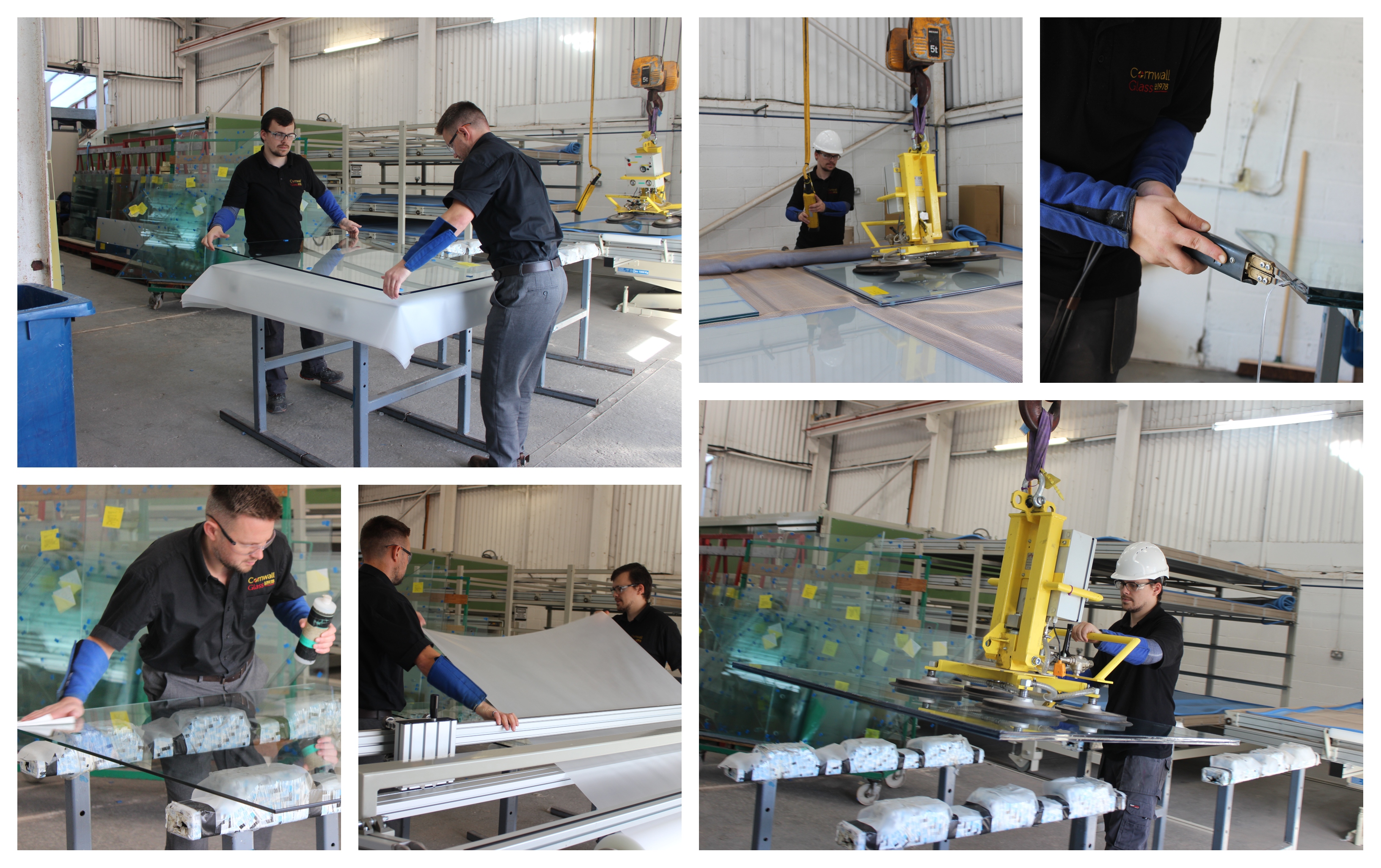Cornwall Glass’ Mark Norcliffe gazes into his crystal ball to predict the key trends in IGU supply for 2022.
‘Calling’ the last 12-18 months, may have been pretty much impossible. COVID-driven disruption to the supply chain came in left of field.
While COVID is with us making definitive is perhaps unwise, but we believe that there is still value in looking ahead, particularly at some key influences, which with or without COVID-19, are shaping IGU supply.
- Regulation will force the adoption of higher standards of performance
 Revisions of Parts L and F of building regulations are expected this month [October] as part of the new Future Homes Standard, coming into force from spring or early summer from next year. At the time of writing, detail still hasn’t been published but we guarantee that minimum levels of performance will be upped.
Revisions of Parts L and F of building regulations are expected this month [October] as part of the new Future Homes Standard, coming into force from spring or early summer from next year. At the time of writing, detail still hasn’t been published but we guarantee that minimum levels of performance will be upped.
Consultation documents suggest new minimum u-values for replacement windows and doors will increase to 1.4W/m2K and new build, potentially as low as1.2W/m2K.
This is just a stepping-stone in the journey to net zero and the Future Homes Standard. Installers, architects, specifiers – everyone is going to need and want IGUs to deliver higher level of thermal performance.
- Continuing growth in aluminium sales will also increase demand for lower centre pane values
The changes to Part L highlight limitations on some aluminium systems. Manufacturers and installers of less energy efficient aluminium systems will need to look to IGU manufacturers for a solution.
There are options. For example, Cornwall Glass added Planitherm One T to our Saint Gobain offer last year. It uses a unique combination of metal oxide layers to achieve a far lower centre pane U-value, across multiple material types of as little as 1.0W/m2K (16mm, 90% argon-filled cavity). That’s a major benefit to anyone fitting aluminium and steel frames, particularly those going into new build, where energy efficiency is critical to specification.
- IGUs are going to need to get bigger and installers are going to need to handle them
Glass is being used as a main structural element of the building envelope and on an increasing scale. The floor to ceiling installations which have dominated high rise designs for decades, have now migrated into high-end – and increasingly, mainstream – residential applications. This includes larger sliding door systems.
now migrated into high-end – and increasingly, mainstream – residential applications. This includes larger sliding door systems.
Our Bystronic IGU line is capable of handling units of up to 2.7m X 5m, so as a business we have capacity to manufacture some of the largest IGUs and can certainly handle anything that the domestic market is likely to send in our direction, as well as light commercial applications.
There is, however, going to be a learning curve for a lot of installers. You need to understand containment and have the right equipment to work with large IGUs on site.
We can support installers through that process, helping them to plan jobs more effectively. Our technical team can also help you get specifications right.
- Solar control is going to be more important – and we should sell it
The UK has in the last decade been 0.3°C warmer than the 1981-2010 average and 0.9 °C warmer than the 1961-1990 average. The changes sound small but their heading in the wrong direction and the implications for the housing stock are big.
Solar-control, is going to be increasingly important going forward, particularly with the increasing use of glass as a core element in the building envelope.
Glass innovation is delivering solutions. Saint Gobain’s SKN 176 was first developed for commercial settings, but with a g-value of 0.37 and u-value of 1W/m2K on a 16mm cavity, we’re seeing it specified more and more in a domestic market.
- Demand for acoustic products will increase
 While there’s a growing body of research connecting noise pollution to ill-health, we believe that there’s a more fundamental driver of growth in acoustic products – the fact that we’re at home more! COVID-19 has changed the working environment for millions of us. Hybrid and remote working means more of us are working at least part of the time at home. Road noise, the neighbour’s barking dog – they’ve become far more of a nuisance overnight.
While there’s a growing body of research connecting noise pollution to ill-health, we believe that there’s a more fundamental driver of growth in acoustic products – the fact that we’re at home more! COVID-19 has changed the working environment for millions of us. Hybrid and remote working means more of us are working at least part of the time at home. Road noise, the neighbour’s barking dog – they’ve become far more of a nuisance overnight.
We’d also argue that the efforts of the big float glass manufacturers to promote acoustic glass to the end-user are starting to filter through.
Our own acoustic offer is built around Stadip Silence from Saint Gobain. This uses a specially developed interlayer to suppress noise at the specific resonant frequency of glass, achieving an airborne sound insulation index value of 54dB without using an overly thick combination of glass, so you’re not putting unnecessary weight into units and making handling more complex.
- Supply chain challenges will ease – but not until the second half of 2022
There’s good news here. Glass supply has been hit by some very specific challenges (in addition to the ones that have hit everyone) – namely, Saint Gobain and Guardian’s cold repair programmes. Those are coming to an end now, although it will remain a little while still, before things normalise. With demand still high from home improvement and new build, while we believe things will be significantly better by the end of this year, we believe it will be summer 2022 before things get back to normal, assuming anyone can find any lorry drivers!
To conclude, the trends that were there pre-COVID, are still there. The shift to larger IGUs, increased demand for solar and acoustic product – and most fundamentally of all, higher levels of thermal efficiency.
That creates a backdrop which offers window and door retailers, those that invest a little time in understanding glass and upselling it, access to some big opportunities.
For more information please call 01726 66325 email info@cornwallglass.co.uk or log on at www.cornwallglass.co.uk .

